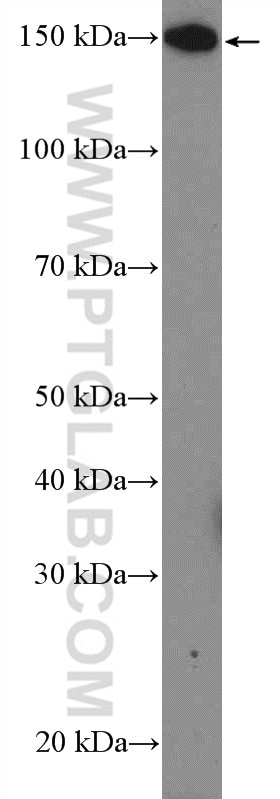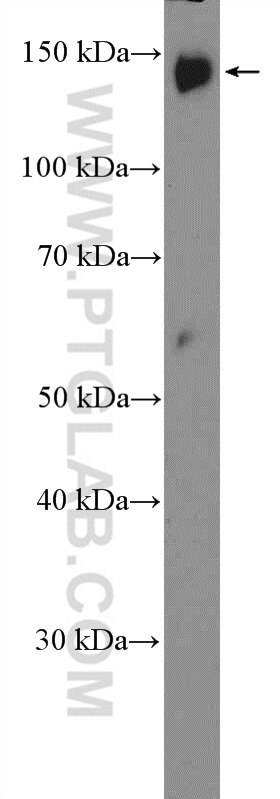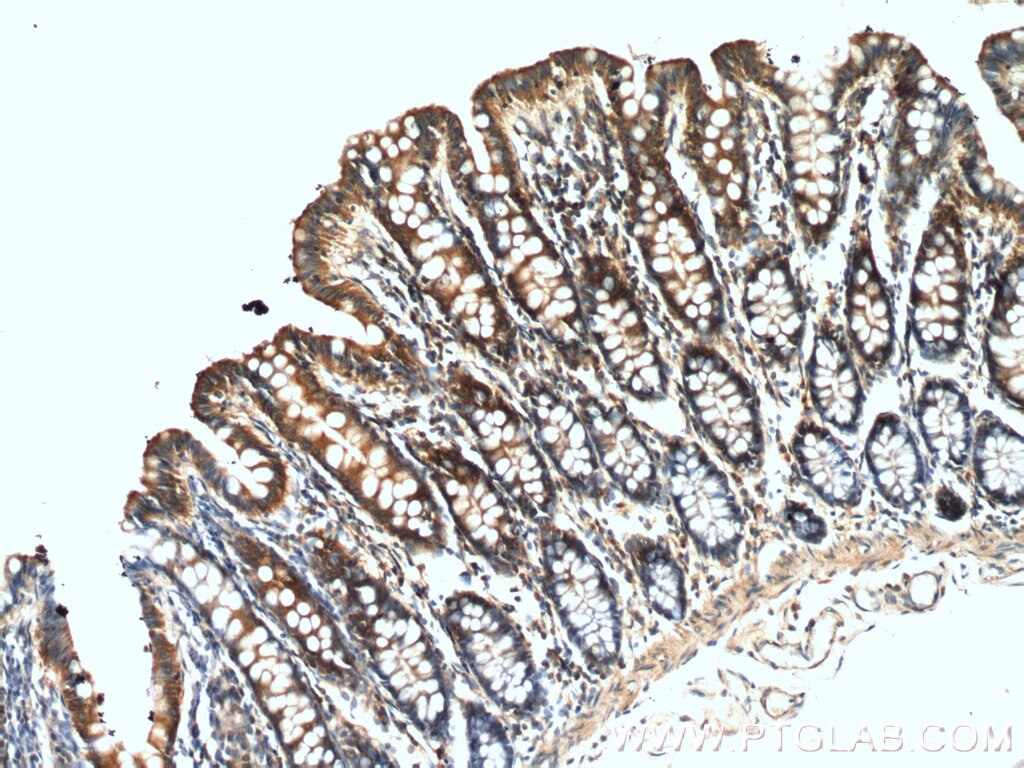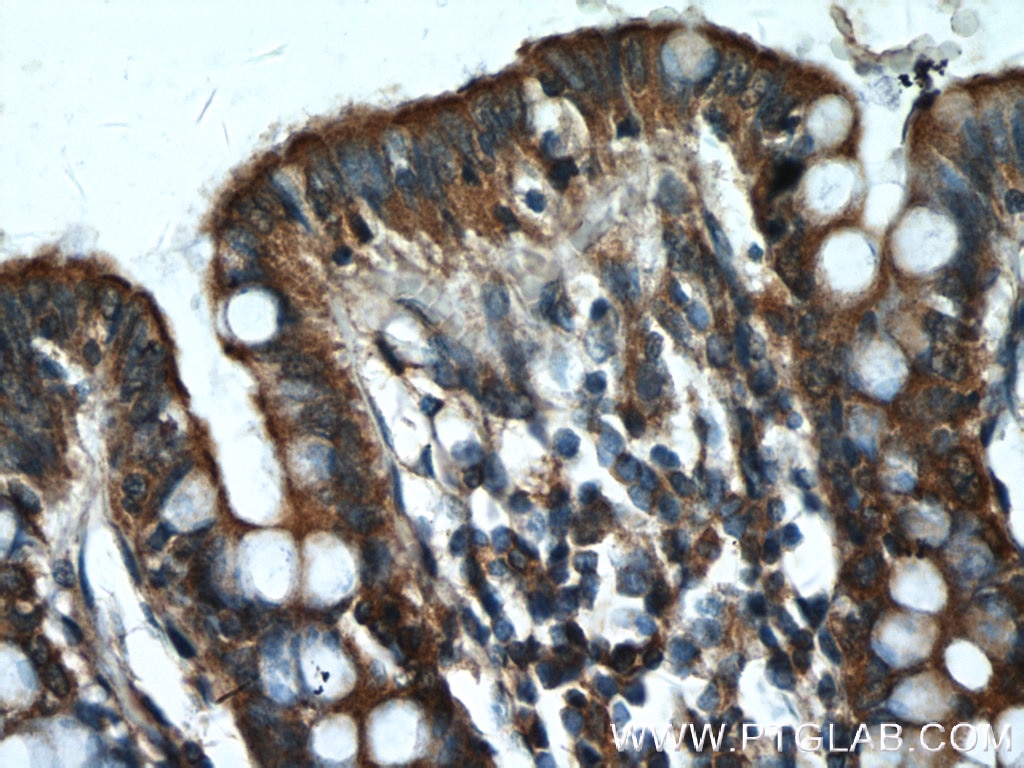Anticorps Polyclonal de lapin anti-PLCB3
PLCB3 Polyclonal Antibody for WB, IHC, ELISA
Hôte / Isotype
Lapin / IgG
Réactivité testée
Humain, souris
Applications
WB, IHC, ELISA
Conjugaison
Non conjugué
N° de cat : 21370-1-AP
Synonymes
Galerie de données de validation
Applications testées
| Résultats positifs en WB | cellules MCF-7, cellules A431, cellules COLO 320, cellules HEK-293T, cellules NIH/3T3 |
| Résultats positifs en IHC | tissu de côlon humain il est suggéré de démasquer l'antigène avec un tampon de TE buffer pH 9.0; (*) À défaut, 'le démasquage de l'antigène peut être 'effectué avec un tampon citrate pH 6,0. |
Dilution recommandée
| Application | Dilution |
|---|---|
| Western Blot (WB) | WB : 1:500-1:1000 |
| Immunohistochimie (IHC) | IHC : 1:50-1:500 |
| It is recommended that this reagent should be titrated in each testing system to obtain optimal results. | |
| Sample-dependent, check data in validation data gallery | |
Informations sur le produit
21370-1-AP cible PLCB3 dans les applications de WB, IHC, ELISA et montre une réactivité avec des échantillons Humain, souris
| Réactivité | Humain, souris |
| Hôte / Isotype | Lapin / IgG |
| Clonalité | Polyclonal |
| Type | Anticorps |
| Immunogène | PLCB3 Protéine recombinante Ag15845 |
| Nom complet | phospholipase C, beta 3 (phosphatidylinositol-specific) |
| Masse moléculaire calculée | 1234 aa, 139 kDa |
| Poids moléculaire observé | 150 kDa |
| Numéro d’acquisition GenBank | BC142681 |
| Symbole du gène | PLCB3 |
| Identification du gène (NCBI) | 5331 |
| Conjugaison | Non conjugué |
| Forme | Liquide |
| Méthode de purification | Purification par affinité contre l'antigène |
| Tampon de stockage | PBS with 0.02% sodium azide and 50% glycerol |
| Conditions de stockage | Stocker à -20°C. Stable pendant un an après l'expédition. L'aliquotage n'est pas nécessaire pour le stockage à -20oC Les 20ul contiennent 0,1% de BSA. |
Informations générales
PLCB3 is a member of the phosphoinositide phospholipase C beta enzyme family that catalyze the production of the secondary messengers diacylglycerol and inositol 1,4,5-triphosphate from phosphatidylinositol in G-protein-linked receptor-mediated signal transduction. Six subfamilies of PLCs (B, G, D, E, Z and H) constitute part of ubiquitous signaling cascades that translate hormonal signals into intracellular events, leading to alternations in cell function. PLCB isoforms 1-4 are stimulated by G-protein activation (Gαq/11 and/or Gβγ). Independent of its enzymatic activity, PLCB3 inhibits the proliferation of hematopoietic stem cells (HSCs) and myeloid cells.
Protocole
| Product Specific Protocols | |
|---|---|
| WB protocol for PLCB3 antibody 21370-1-AP | Download protocol |
| IHC protocol for PLCB3 antibody 21370-1-AP | Download protocol |
| Standard Protocols | |
|---|---|
| Click here to view our Standard Protocols |








